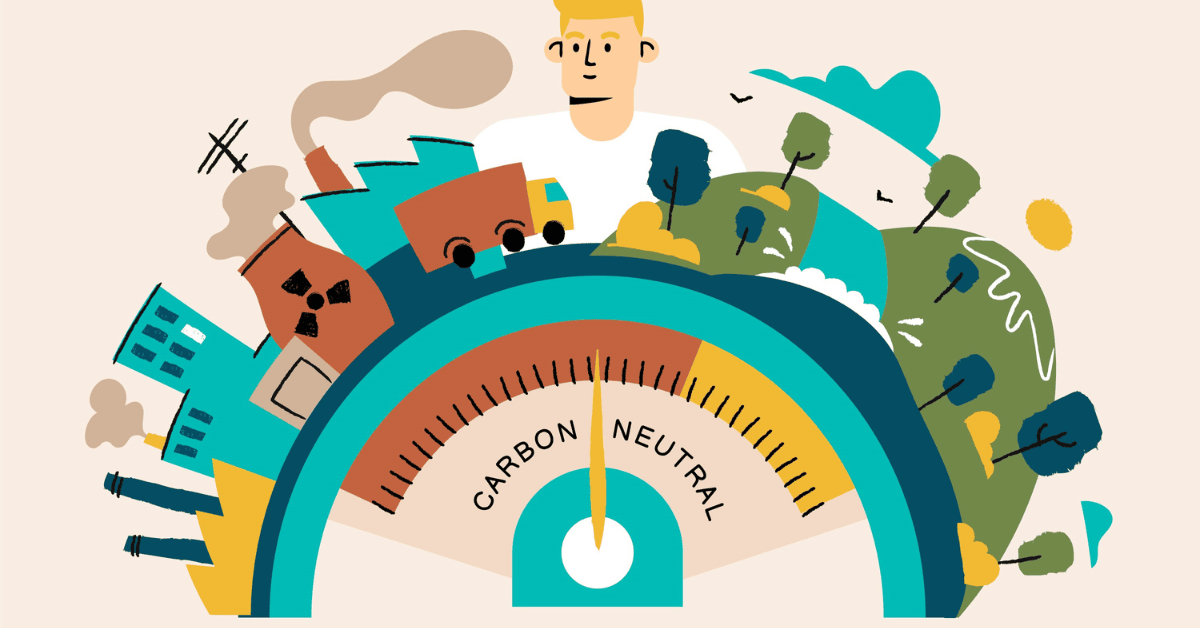Contact: +91 99725 24322 |
Menu
Menu
Quick summary: Discover how advanced technologies like TraceX’s Digital MRV platform, blockchain, AI, IoT, and satellite monitoring are transforming agriculture into low carbon supply chains. Learn how these innovations enhance transparency, compliance, and efficiency while reducing carbon footprints and supporting sustainable practices.

Imagine walking through a field where every choice made—from the seed planted to the food delivered—is meticulously designed to reduce carbon emissions and enhance sustainability. This is not a distant dream but an urgent necessity for the future of our planet. Low carbon agriculture supply chains are about more than just reducing emissions—they’re about rethinking the entire system to build resilience and sustainability from the ground up.
Agriculture plays a significant role in global carbon emissions. The sector accounts for nearly 25% of all greenhouse gas emissions, with the majority coming from land use, methane from livestock, and nitrous oxide from fertilizers
However, despite the advances in technology and practices, many supply chains remain inefficient and opaque, making it challenging to track and minimize carbon emissions effectively. Traditional agricultural supply chains are complex and fragmented, often leading to a lack of visibility and accountability in carbon management. This complexity not only hinders efforts to reduce emissions but also creates challenges in meeting regulatory requirements and consumer expectations for sustainability.
Key Takeaways
The agricultural sector is a significant contributor to greenhouse gas emissions, and the stakes couldn’t be higher. As climate change accelerates, the pressure on agriculture to reduce its carbon footprint has never been more intense, the demand for sustainable food production is rising faster than ever. Consumers want to know where their food comes from, how it’s grown, and what impact it has on the planet. For agribusinesses, this shift means one thing: embracing sustainability is no longer optional—it’s essential for survival.
Traditional farming methods, with their reliance on intensive resource use and inefficient supply chains, are driving these emissions higher. The result? A growing carbon footprint that’s contributing to global warming and putting immense pressure on our environment.
This is where low carbon agriculture comes into play. By adopting practices that reduce emissions across the entire supply chain—from farming to processing to distribution—agribusinesses have the opportunity to make a real impact. But it’s not just about reducing emissions for the sake of the planet. Agribusinesses are facing increasing pressure from regulators who are setting ambitious carbon reduction targets, like the European Union’s Green Deal and other climate policies. Failure to comply with these regulations can lead to penalties, supply chain disruptions, and lost market opportunities.
Beyond regulations, consumers are demanding change. With growing awareness around sustainability, today’s consumers are making conscious decisions to support brands that prioritize the environment. For agribusinesses, this translates into a powerful market force. Embracing low carbon practices is not just about staying compliant—it’s about staying relevant and competitive in a marketplace that values sustainability.
At the same time, global climate goals, like the Paris Agreement’s commitment to limiting global warming to 1.5°C, are putting additional pressure on industries to lower their emissions. Agribusinesses are in a unique position to lead the charge by transforming their supply chains to be more sustainable and efficient. By reducing carbon emissions, they not only contribute to the fight against climate change but also future-proof their operations, ensuring long-term viability in a changing world.

In this landscape, the question for agribusinesses isn’t whether to adopt low carbon agriculture—it’s how fast they can make the transition.
Low carbon agriculture supply chains are an essential part of sustainable agriculture. These supply chains refer to the entire system of production, processing, and distribution of agricultural products that have minimal carbon footprint. Sustainable agriculture is a way of producing food that is environmentally friendly, socially responsible, and economically viable. It involves the adoption of practices that promote the efficient use of resources, reduce waste, and minimize the use of fossil fuels.
1. Sustainable Farming Practices
2. Efficient Resource Management
3. Carbon Footprint Reduction Across the Supply Chain
Each of these elements works together to cut emissions and create a more sustainable, resilient, and efficient agricultural system.
Agribusinesses face significant pain points in addressing carbon emissions. Traditional supply chains are fragmented, inefficient, and often lack transparency, making it difficult to track carbon emissions at various stages from farm to fork. This complexity is exacerbated by increasing regulatory pressures, like the EU Deforestation Regulation and carbon pricing mechanisms, which demand stricter compliance and reporting.
Failure to act can lead to serious consequences—non-compliance with regulations, damage to brand reputation, and financial losses due to potential fines or market exclusion. Reducing emissions is not just a regulatory requirement but a strategic necessity for maintaining competitiveness and consumer trust.
The challenge is clear: agribusinesses must innovate to create transparent, sustainable supply chains that reduce emissions and ensure compliance. Those who fail to adapt risk falling behind in an industry that’s rapidly transforming towards a more sustainable future.
Sustainability and procurement heads in agribusiness face several challenges in measuring the impact of their sustainable practices:
In the quest for low carbon agriculture, technology is not just an enabler but the backbone of transformative change. Here’s how key innovations are driving sustainable practices and reducing carbon footprints in agriculture:
Blockchain technology is revolutionizing supply chains by offering a transparent and immutable ledger of transactions. In agriculture, this means every step from farm to fork is recorded with precision. Each transaction—be it a shipment of seeds, the application of fertilizers, or the final sale—is logged in a blockchain, creating a verifiable record that can be audited at any time. This transparency helps ensure that all practices are compliant with low-carbon standards, reduces the risk of fraud, and builds trust with consumers who are increasingly demanding proof of sustainability.
Digital Monitoring, Reporting, and Verification (MRV) systems are crucial for managing carbon emissions. These systems use advanced sensors and software to continuously track greenhouse gas emissions across the supply chain. Real-time data allows for immediate corrective actions and more accurate reporting. By integrating Digital MRV, farmers and agribusinesses can better understand their carbon footprint, make informed decisions on reducing emissions, and provide credible, real-time reports to regulators and stakeholders. This proactive approach not only ensures compliance with environmental regulations but also enhances operational efficiency.
Artificial Intelligence (AI) and the Internet of Things (IoT) are transforming agriculture with smart solutions that optimize resource use and minimize emissions. AI algorithms analyze vast amounts of data to predict weather patterns, optimize irrigation schedules, and manage crop health. IoT devices, like soil sensors and weather stations, provide real-time data that AI systems use to make recommendations for resource use—like the precise amount of water or fertilizer needed. By using these technologies, farmers can reduce waste, enhance crop yields, and lower their overall carbon emissions, contributing to a more sustainable agriculture system.
Satellite technology and data analytics play a pivotal role in monitoring land use, deforestation, and overall sustainability. Satellites provide a bird’s-eye view of agricultural practices, allowing for the detection of deforestation, land degradation, and changes in land use. Advanced data analytics process this information to offer insights into the environmental impact of farming activities. This helps stakeholders track compliance with sustainability standards, manage natural resources more effectively, and make data-driven decisions to enhance environmental stewardship.
Check how TraceX is helping brands build low carbon coffee
TraceX’s Digital MRV (Monitoring, Reporting, and Verification) platform is a powerful tool designed to support low carbon agriculture by providing advanced solutions for tracking and managing carbon emissions throughout the supply chain. Here’s how it makes a difference:
1. Real-Time Carbon Emission Tracking
The platform offers real-time monitoring of carbon emissions across various stages of the agricultural supply chain. By integrating with sensors and IoT devices, it continuously collects data on emissions and other environmental metrics. This real-time tracking allows for immediate adjustments and interventions, helping farmers and agribusinesses reduce their carbon footprint more effectively.
2. Accurate and Transparent Reporting
The platform simplifies the reporting process by automating data collection and analysis. It generates accurate, detailed reports on carbon emissions and sustainability metrics, which are crucial for compliance with environmental regulations and standards. These reports are transparent and easily accessible, providing stakeholders with reliable information and building trust with consumers and regulators.
3. Enhanced Verification Processes
The platform leverages blockchain technology to ensure the integrity and accuracy of the data collected. By using a decentralized ledger, it provides a tamper-proof record of emissions data and sustainability practices. This verification process enhances credibility and helps in meeting certification requirements for low carbon and sustainable practices.
4. Integration with Existing Systems
The platform is designed to integrate seamlessly with existing agricultural management systems. This interoperability ensures that TraceX’s Digital MRV can be adopted without disrupting current operations. It complements existing tools and processes, providing a cohesive approach to managing and verifying carbon emissions.
5. Data-Driven Insights for Improvement
With advanced analytics and reporting features, the platform helps users gain valuable insights into their carbon emissions and overall environmental impact. These insights enable informed decision-making, allowing farmers and agribusinesses to implement targeted strategies for emission reduction and sustainability improvement.
6. Supporting Compliance with Regulations
TraceX’s Digital MRV platform assists in navigating complex regulatory requirements by providing tools for accurate data tracking and reporting. This support is essential for compliance with regulations such as the EU Deforestation Regulation (EUDR) and other sustainability standards, ensuring that businesses meet their legal obligations and avoid potential penalties.
7. Facilitating Supply Chain Transparency
By providing a comprehensive view of emissions data across the supply chain, TraceX’s platform enhances transparency. This visibility allows stakeholders to trace the environmental impact of their products from farm to fork, fostering accountability and promoting sustainable practices throughout the supply chain.
Incorporating advanced technologies into agriculture is pivotal for developing low carbon supply chains that are both sustainable and efficient. By leveraging tools such as TraceX’s Digital MRV platform, blockchain for traceability, AI and IoT for smart farming, and satellite monitoring for comprehensive oversight, the agricultural industry can significantly reduce its carbon footprint. These innovations provide real-time tracking, accurate reporting, and enhanced transparency, facilitating better decision-making and regulatory compliance. As the demand for sustainable practices grows, adopting these technological interventions will not only meet environmental goals but also drive operational efficiency and foster a more accountable and resilient food system.
Low carbon agriculture focuses on reducing greenhouse gas emissions throughout the agricultural supply chain. It involves practices and technologies that minimize carbon footprints, such as efficient resource use, reduced deforestation, and sustainable farming methods. This approach is crucial for mitigating climate change, improving environmental sustainability, and meeting regulatory requirements aimed at reducing overall carbon emissions.
TraceX’s Digital MRV platform enhances low carbon agriculture by providing real-time monitoring, accurate reporting, and verification of carbon emissions. The platform integrates with sensors and IoT devices to track emissions data, generates detailed reports for compliance, and ensures data integrity through blockchain technology. These features help farmers and agribusinesses manage their carbon footprint effectively, improve transparency, and meet sustainability goals.
In addition to TraceX’s Digital MRV platform, other key technologies include blockchain for traceability, AI and IoT for smart farming, and satellite monitoring for tracking land use and deforestation. Blockchain ensures transparent and tamper-proof records, AI and IoT optimize resource use and reduce emissions, and satellite monitoring provides comprehensive oversight of environmental impacts. Together, these technologies support the development of sustainable and efficient low carbon agriculture supply chains.
